Carb cycling is the foundation of what I do every day and with every client. I know through years of experience with many different clients that carb cycling works, so I’m going to introduce you to the basics and the five different carb cycling plans—Easy, Classic, Turbo, and Fit, and Extreme. I’m stripping it down to the basics to get you started:

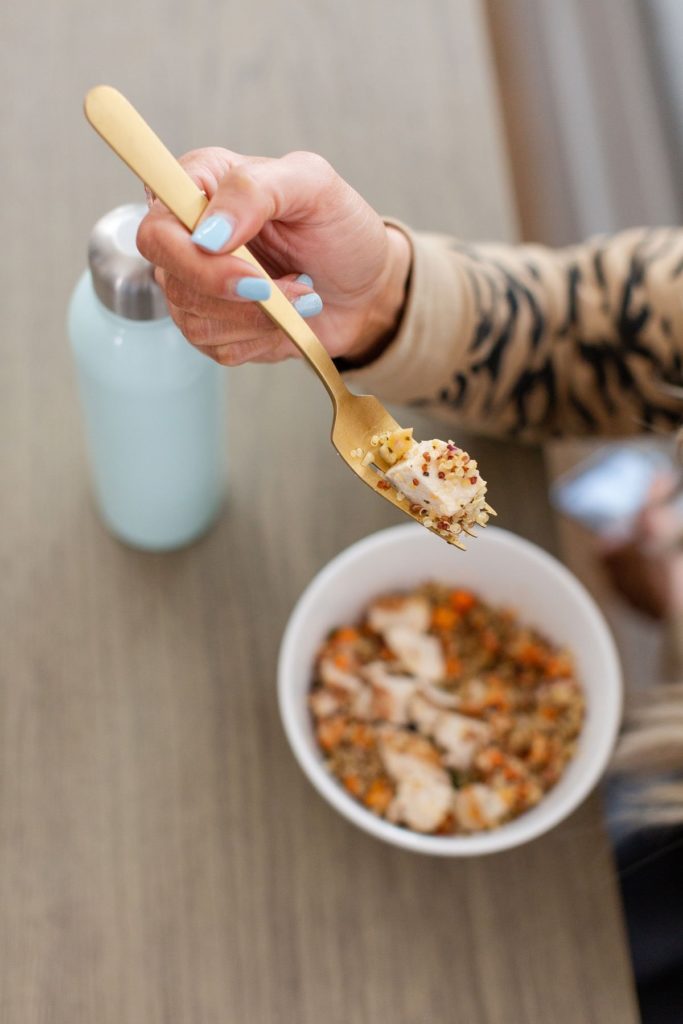
What is Carb Cycling + How Does it Work?
Carb cycling is an eating plan with alternating high carb and low carb days. It’s that simple. It also has built-in reward days or reward meals (depending on the plan you’re following), so you can still eat your favorite foods on a regular basis. Sounds pretty much perfect, right? You can eat healthy foods, enjoy foods you love, and still lose weight.
While each plan has a different mix of high carb and low carb days, each day works basically the same:
- Eat five meals—no more, no less.
- Eat breakfast within 60 minutes of waking or whenever your feeding window opens if you’re an intermittent faster.
- For breakfast, you’ll eat a portion of protein, carbs, and fat.
- For your next 3 meals (snack, lunch, snack), you’ll eat either a low or high carb meal depending on which day you’re on. So, if you’re on a low carb day, those three meals will be low carb. If you’re on a high carb day, those three meals will be high carb.
- Your last meal of the day will ALWAYS be a low carb meal. Always.
- Choose approved foods.
- Drink ½ your body weight in ounces of water every day. So, if you weigh 150 lbs, you’ll drink 75 ounces a day.
How Does Carb Cycling Work?
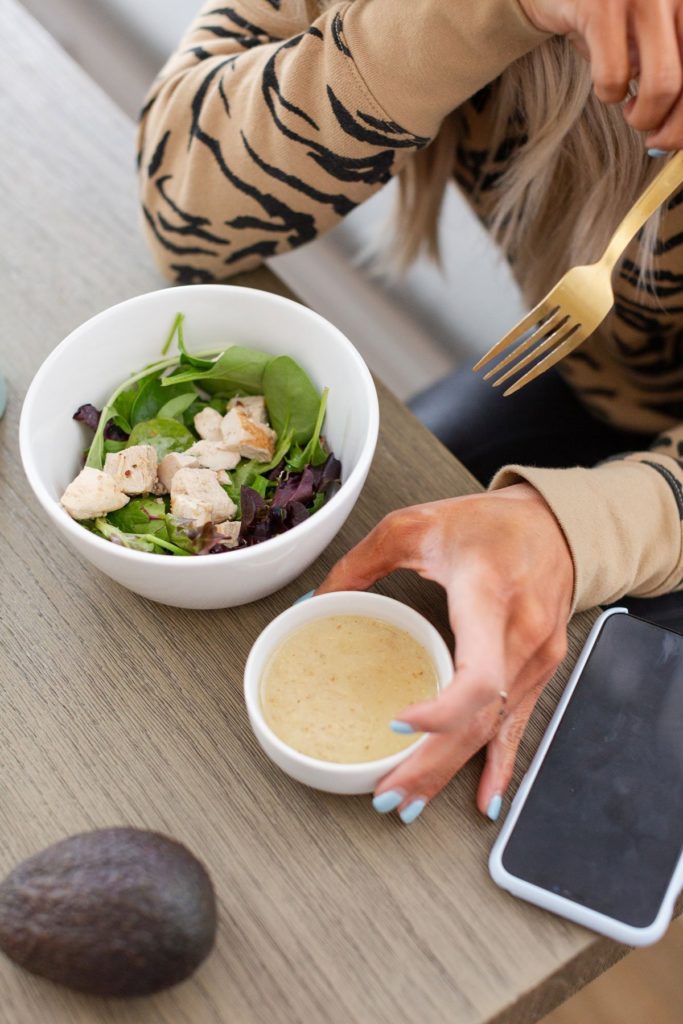

Carb cycling is based on the right combination of proteins, carbs, and healthy fats. In order to lose weight, our bodies need the right combination. Here’s why:
- Protein builds and maintains muscles and these muscles burn calories like an inferno. Protein also breaks down more slowly than carbs and fat, which burns even more calories and helps you feel fuller longer.
- Carbs are the preferred fuel source for your muscles and organs, and they come in healthy versions (vegetables, fruits, grains, and legumes), and not-so-healthy versions (cakes, cookies, soda, doughnuts, candy, and many processed foods). Healthy carbs are also crucial for burning calories, and since they break down more slowly than those not-so-healthy carbs, they keep your blood sugar and energy levels steady, and they also keep your calorie-burning furnace hot so it burns more calories!
- Healthy fats (unsaturated fats) eaten in moderation help the development and function of your eyes and brain and help prevent heart disease, stroke, depression, and arthritis. Healthy fats also help keep your energy levels steady and keep you from feeling hungry.
Why do we alternate high carb + low carb days in carb cycling?
On high carb days you’re stocking your calorie-burning furnace so that on low carb days your furnace burns fat, and lots of it! This pattern tricks your metabolism into burning a lot of calories, even on those low carb days. It’s an amazing and well-proven process.


What are the Benefits of Carb Cycling?
Carb cycling has many benefits:
- It fits any lifestyle.
- You’ll learn how to shed weight and body fat and how to make smart lifestyle choices for the rest of your life. This puts YOU in control.
- You’ll feel better and have more energy.
- You’ll eat the foods you love.
- You’ll build lean, strong muscles.
- You’ll be empowered physically, mentally, emotionally, and spiritually.
I’ve only skimmed the surface of carb cycling, so learn more about our five carb cycling plans to find your ideal cycle, and let’s get cycling!
Get even more information on carb cycling in both or our books: Extreme Transformation (the newest edition to our carb cycline lineup featuring the Extreme Cycle) and Choose More, Lose More for Life (which features our other four cycles).
If you’d like some help creating your own meals, there’s a handy “Create Your Own Meals” chart in this post! To get a customized cycle for you and your goals + several workout programs (from gym-based to bodyweight to dance) + the all-important life lessons (the key to long-term transformation), check out The Transform App.
Note: If you’ve been carb cycling using our book, Choose Lose More, Lose More for Life, you’ll notice that we’ve changed a couple of things since that book was published: You now include a fat for breakfast, and every final meal of the day is a low carb meal. Like with a lot of things in life, the more you do them, the more you learn about how to do them even better!
xo,

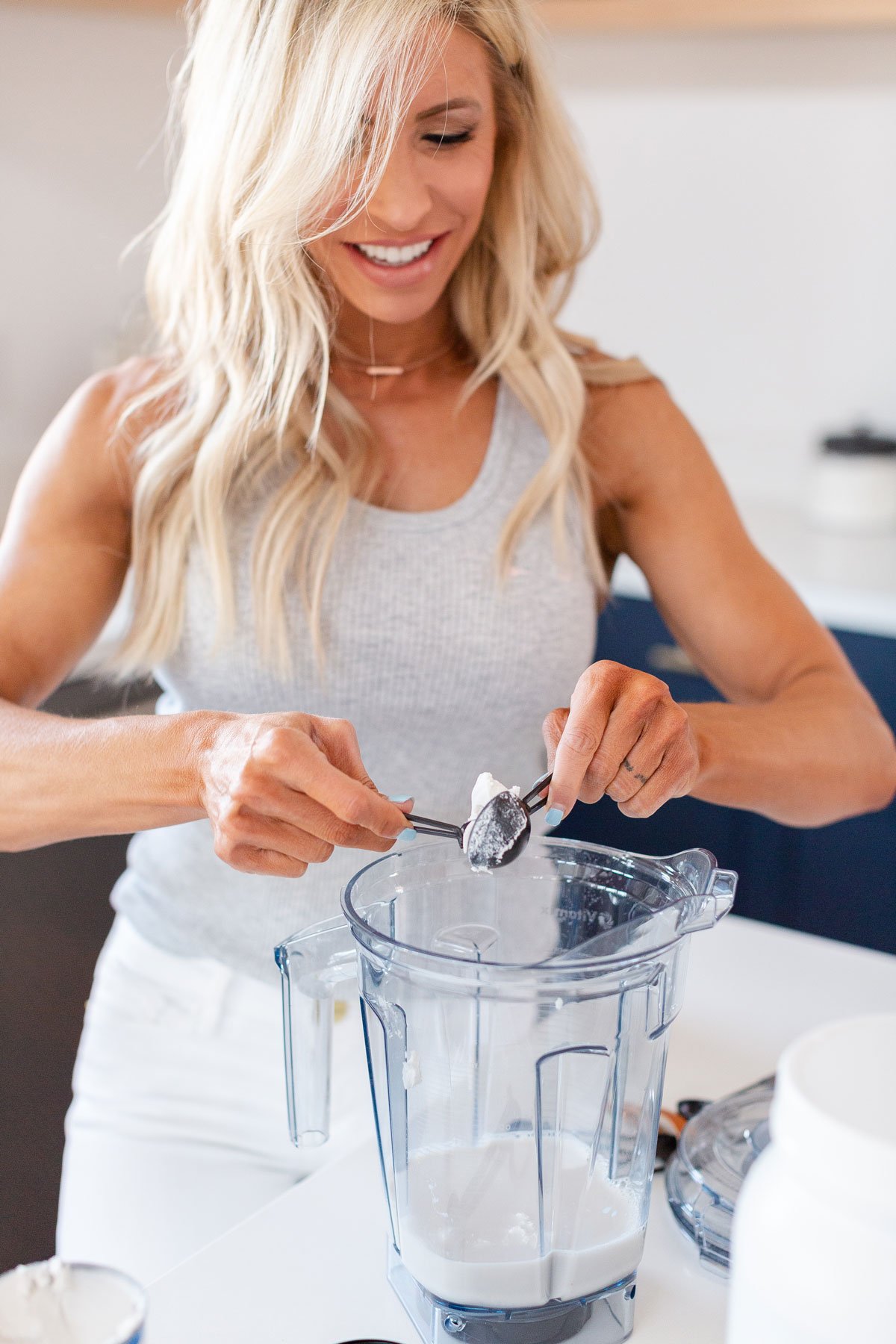

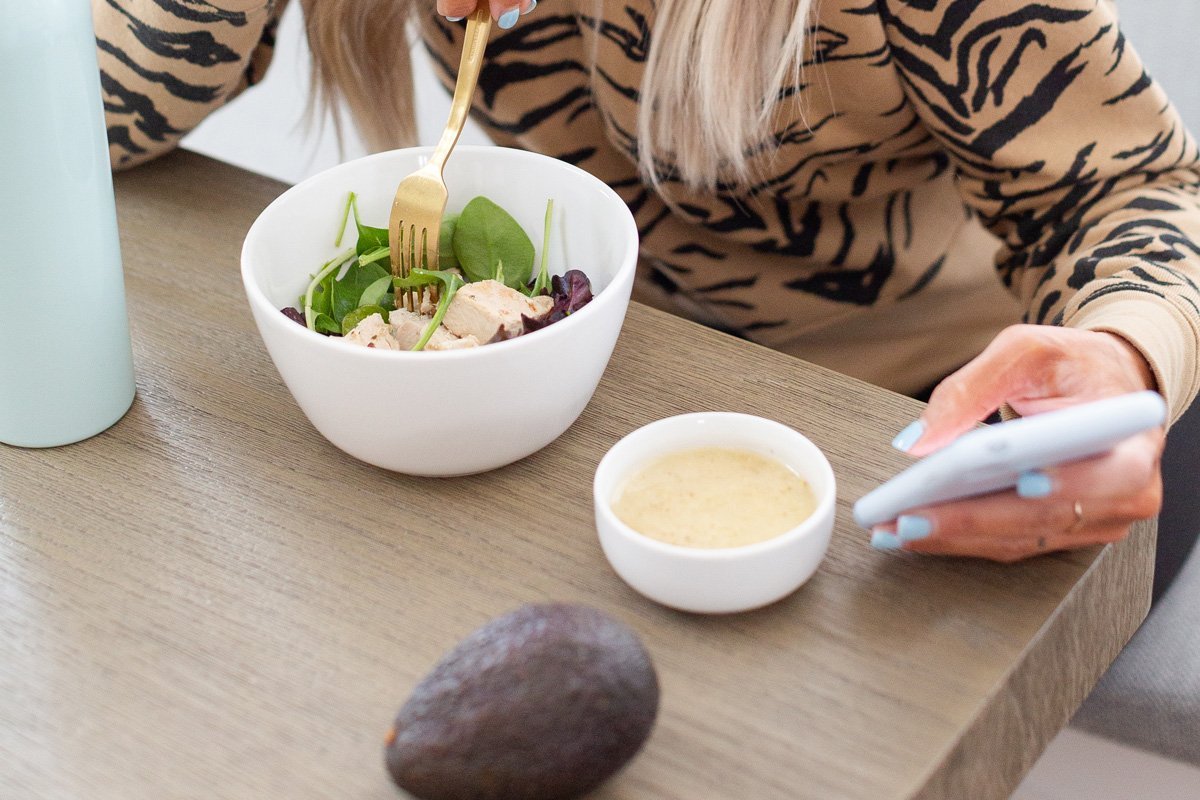

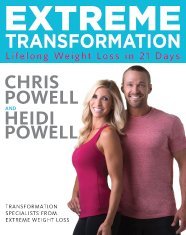



1,394 Responses
Hi Team Powell! So I’ve been carb cycling for about a week and love it so far! I’m rarely hungry with all the eating, am down a couple of pounds, and feel GREAT! One of my goals this week was to join a gym, which I did. The gym came with a free health assessment and personal trainer which I thought was great. BUT, then I met with the trainer he crushed my world! He said that I should not be carb cycling, that I was eating too many carbs and too few calories, and that I would only get lasting results from the Keto diet (I read up….yikes!). He told me that as soon as I stopped I would gain all the weight back because the work outs I am doing aren’t intense enough to build muscle, and he also made me feel that I could not reach my goals without a personal trainer…which I cannot afford. Things where going great until I met this guy. Any advice? Is this common in the personal trainer world? My gut tells me to ignore him, follow the book and do my own thing. I have lost 60 lbs on my own and only have 10 to go to reach my happy weight of 150 at 5 ft 7 (He told me I need to lose 20 to be healthy weight). I am looking to find something new and sustainable to lose the weight and tone up. I was so excited and happy, and now I am just confused and not so enthusiastic
Hi Alene: Wow. What an experience! First of all, carb cycling has been proven to work, and it’s a plan that you can follow for life – so no stopping! And as your strength and fitness increase, you can increase the duration and intensity of your workouts so you can reach all of your goals (including building muscle, if that’s one of your goals). And you definitely don’t need a personal trainer to achieve your goals. A good certified personal trainer can certainly be a good tool, but it’s definitely not a necessity. You’ve lost 60 pounds on your own, which says a lot. As for your ideal weight range, that’s something your healthcare team would be a good resource for if you have questions about that. And remember, when you build muscle, that replaces fat weight, so going by weight only is not always a true picture of what’s healthy. Let’s get back that happiness, excitement, and enthusiasm! You got this!
Is coffee allowed when you are carb cycling?
Hi Paula: Yes, plain black coffee is allowed.
Hi,
I just finished reading Choose More, Lose More for life. When I looked at the recipes I noticed all of the breakfast items contained egg whites instead of whole eggs. Why is that?
My husband typically makes scrambled eggs with onions for our breakfast each morning. I’m trying to figure out whether we would need to change that.
Hi Kristy: Great question! The reason is that egg yolks are counted as fats and egg whites are counted as proteins in carb cycling, and since every breakfast is a high carb meal (protein + carbs + veggies), egg yolks don’t fit into those meals. Hope that helps!
Just call me confused,
I have read the 2nd book, and started Carb cycling today (low carb day). I am still a little confused about fruit fitting in. For example.. today I had the Denver omlet : egg whites, ham, cheese, onions and peppers. Can I still have a fruit? Or would that fruit take the place of one of the veggies?
Thanks in advance!
Hi Jessica: Fruit can be a bit confusing. In carb cycling, fruit is a carb, so you can have it as the carb portion of a high carb meal. Hope that helps!
Love the Powells!
I read Chris’ latest book and have been following the turbo cycle for two weeks. My first week I was down 4 lbs! This week I went back up 3lbs – so only a net loss of 1lb in 2 weeks. I’ve got a good 50 lbs to lose… is this fluctuation normal? Been following the plan… what am I missing, or am I being too impatient and have unrealistic expectations?
Hi SJ: Yes, a fluctuation at the beginning of the program is very normal as your body gets used to a new – and healthier – way of doing things. Just make sure you’re following the Turbo Cycle correctly, and you should be good to go!
Hi,
I was wondering which carb cycling plan Chris is on. My husband is built a lot like Chris and his main goal is to gain weight & build muscle. He doesn’t have a lot of fat to loose. We have read through all 4 of the plans and we aren’t sure which would be the best fit for him.
Thank You!
Marlena
P.s. Good luck this weekend in your competitions!
Hi Marlena: Chris is currently following a different nutrition program to help him reach his physique competition goals. And it looks like it worked! As for your your husband, he might want to begin with the Fit cycle: https://heidipowell.net/2719/carb-cycling-the-fit-cycle/. And he can change cycles at any time, so the program is totally flexible.
I just started adjusting our menu to allow me to carb-cycle. Its been going ok so far. My question is about kids: I have a 3 and a 6 year old who love veggies and could theoretically eat low-carb day meals for breakfast and dinner during the week and all meals on weekends. Would you recommend still keeping more carbs in their meals? We have an appointment in October for their well child visits so I’ll be asking their pediatrician but wanted to see if anyone on Team Powell had thoughts on the matter.
We are doing the Easy Carb Cycle for now.
Thanks!
Hi Kathie: It is best that kids eat meals with proteins, carbs, veggies, and fats, so yes, they should have more carbs in their meals than is recommended for adults on low carb days. But as always, it’s best to follow their healthcare team’s recommendations. Good luck!
I?m on day 5 of carb cycling and I?m wondering how important the timing of the meals are. I wake up at 5:00 to get my daughter off to school then I head right for the gym. I?ll get sick if I eat before the gym so my first meal of the day (a high carb/protein shake) isn?t until after my work out between 8:30 and 9:00. And then from there I eat every 3 hours leaving my last meal around 9:00 PM and then I go to bed between 10:00 PM and 11:00 PM. Is this going to cause a negative effect?
Hi Ginger: While it’s best to get in all 5 meals a day, if you can’t eat before working out, then you’re good to eat 4 meals a day beginning as soon as you can after your workout. You could also eat a snack-sized “meal” at 9, since your body won’t be getting in any nutrition until about 12 hours later. Welcome to carb cycling!
I’ve always been off and on the Atkin’s diet, and seem to have hit a plateau with losing weight while on it. Is there an easy daily meal plan I can follow to help with the Carb Cycling diet? It’s much easier to have something on paper to reference, instead of trying to decide on my own what to eat.
Hi Sarah: We really don’t have any meal plans available – I’m so sorry! However, here are some meal ideas for low and high carb days (all recipes are from Chris and Heidi’s books: “Choose to Lose” and “Choose More, Lose More for Life”). Low carb day: Breakfast (within 30 minutes of waking): Basic Omelet with a corn tortilla to make it a wrap. Snack (3 hours later): A protein shake with a portion of a healthy fat, like peanut butter, mixed in. Lunch (3 hours later): Tomato Basil and Garlic Chicken with a portion of olive oil drizzled on top. Snack (3 hours later): Sonora Cottage Cheese with a portion of avocado. Dinner: (3 hours later): Lemon Chicken drizzled with salad dressing. High carb day: Breakfast (within 30 minutes of waking): Denver Omelet with a portion of your favorite fruit or oatmeal on the side. Snack (3 hours later): Greek Yogurt Parfait with a portion of low fat granola. Lunch: (3 hours later): Caribbean Jerk Chicken with a portion of brown rice. Snack (3 hours later): Protein shake with a portion of oatmeal mixed in. Dinner (3 hours later): Apple Cider Chicken. And remember, you can have veggies (the non-root/non-starchy type) with every single meal, and you can use any of the foods on Chris and Heidi’s approved foods list – in the proper proportions – to create meals to fit your needs. Hope that helps!
I have a protein shake that has 20g protein, 6g carbs, and 7g fat. Would the fat content in this be okay for a high carb day?
Hi Heather: This shake doesn’t have enough carbs to count as the carb for a high carb meal, and with the fat content, it would be a better choice for a low carb meal. Hope that helps!
Hi Heidi!
I just started the Turbo Cycling program yesterday (08/24) and I think I may be confused on a few things. I understand the portioning of foods, the carbs, fats, proteins, etc. but my biggest question is what should be my set carb intake for my HC/LC days?
I found a calculator online that said I my LC Days should be 1200 calories/ 32.2 carbs/161g protein/16.1 fat and for my HC days 1500 calories/161 carbs/120.75 protein/ and as little fat as possible. Is this accurate or are there different numbers I should be going against.
My second question is that in your book, it says veggies are an unlimited snack throughout the day for the Turbo program. Should I be counting their calories and carbs or should I just chalk them up to freebies and munch away?
Your book just says to portion things out in the 100ish calories portions listed – but I want to make sure Im keeping within my guidelines of calories/carbs/protein/fat.
Any help on this would be so greatly appreciated – I’d hate to weigh in on Sunday and realize I was doing this all wrong!
Thanks A Million!
Amanda
Hi Amanda: Let’s get you some answers to your questions! 1. In carb cycling we don’t count grams, just portions sizes (and calories if you’d like to). This makes things so much easier, but because of this, I don’t have any gram counts for the day to offer you. I promise – the portion size system works! 2. As for veggies, you’ll still want to count those calories as even a few calories here and there can really add up. And you can use the portion guides (check out the graphic in this post: https://heidipowell.net/4514/carb-confusion/), and you can use the calorie guides in the book as a way to double check too. Welcome to carb cycling!